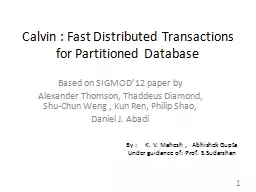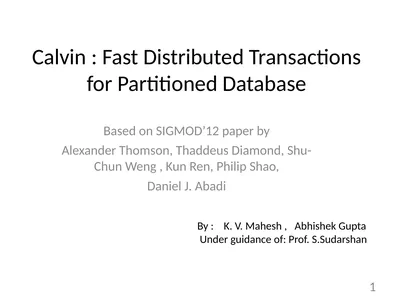PPT-Calvin : Fast Distributed Transactions for Partitioned Data
Author : pamella-moone | Published Date : 2017-05-27
Based on SIGMOD12 paper by Alexander Thomson Thaddeus Diamond Shu Chun Weng Kun Ren Philip Shao Daniel J Abadi By K V Mahesh Abhishek Gupta Under guidance
Presentation Embed Code
Download Presentation
Download Presentation The PPT/PDF document "Calvin : Fast Distributed Transactions f..." is the property of its rightful owner. Permission is granted to download and print the materials on this website for personal, non-commercial use only, and to display it on your personal computer provided you do not modify the materials and that you retain all copyright notices contained in the materials. By downloading content from our website, you accept the terms of this agreement.
Calvin : Fast Distributed Transactions for Partitioned Data: Transcript
Download Rules Of Document
"Calvin : Fast Distributed Transactions for Partitioned Data"The content belongs to its owner. You may download and print it for personal use, without modification, and keep all copyright notices. By downloading, you agree to these terms.
Related Documents














